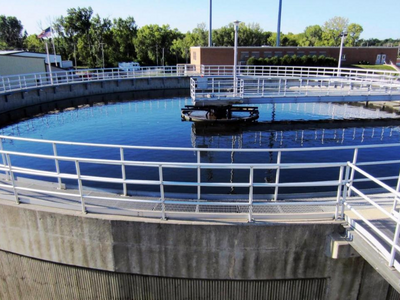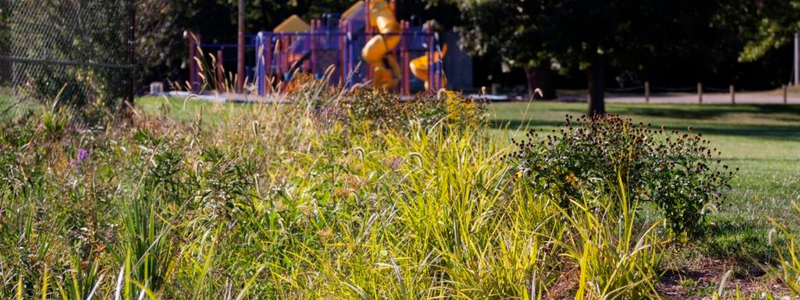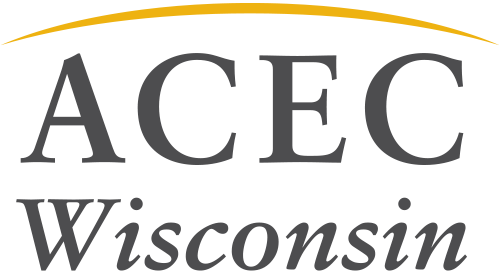The Role of a Municipal Engineer in a Post Infrastructure Bill America

Written by: Tonia Westphal, PE, LEED AP
![]()
What happens when you flush? It’s a fact that many of us do not (or choose not to) think about. Every day, 62.5 billion gallons of wastewater is treated by our wastewater treatment plants across the U.S. In addition to treatment plants, our wastewater infrastructure includes over 800,000 miles of public sewers. Recognizing that our centralized wastewater treatment plants and sanitary sewers are currently stressed by capacity and/or degradation, our systems are susceptible to Sanitary Sewer Overflows (SSOs). It doesn’t take a stretch of the imagination when you consider the impact SSO’s have on homes and communities.
 According to the American Society of Civil Engineers (ASCE), more than 2,400 wastewater treatment plants have reached or exceeded their capacity to treat water, while the remaining 13,600 plants are operating at over 80% capacity and growing while they naturally approach the end of their useful life. Sanitary sewer and wastewater pipes have a limited lifespan as well and become prone to cracks and infiltration as they age.
According to the American Society of Civil Engineers (ASCE), more than 2,400 wastewater treatment plants have reached or exceeded their capacity to treat water, while the remaining 13,600 plants are operating at over 80% capacity and growing while they naturally approach the end of their useful life. Sanitary sewer and wastewater pipes have a limited lifespan as well and become prone to cracks and infiltration as they age.
Recently, the water infrastructure capital improvement gap was calculated at $81 billion.
The ASCE Report Card for the Nation’s Infrastructure, giving wastewater a grade of D+, one of the lowest scores of any infrastructure system. Yet, wastewater collection and treatment are only a few of the many infrastructure systems maintained by municipalities. ASCE’s overall report card scores a cumulative infrastructure grade of “C –” denoting that Nation’s infrastructure requires attention.
The Federal government’s recently passed Infrastructure Bill is intended to assist states and municipalities to rebuild our crumbling infrastructure. The availability of new funding is leading many utilities to explore new strategies to maximize the effectiveness of their capital improvement spending to address critical infrastructure needs.
There’s Never Been a Better Time to Complete Infrastructure Projects
Prior to rehabilitating public infrastructure, we encourage communities to be thoughtful about the cost-to-benefit of replacing in-kind versus spending more time defining the problem, determining real needs, and evaluating solutions. Municipalities may find it easy to be pessimistic about needing to find a solution to the most obvious infrastructure deficiencies, but in reality, we’re currently experiencing unprecedented levels of support for infrastructure improvement and funding. This is the perfect time to recognize opportunities to implement a more holistic approach to capital improvement planning, leading to system changes that will benefit the entire community for the long haul.
Holistic Municipal Engineering
Considerations Prioritizing Goals
From sanitary sewer repairs to roadway rehabilitation, how does a municipality decide what to tackle first? Of course, cities perform their own capital improvement planning. Collaborating with a trusted engineering advisor during capital improvement planning to consider what will have the greatest impact with the currently available resources is the earmark of a forward-thinking municipality. An engaged municipal engineer’s solutions will remain flexible based on client goals, assistance opportunities, and community vision. Furthermore, an engineering partner can offer best-practices gained by working with other clients and communities.
Recognizing Funding Trends
Municipal engineers will utilize past data, current market information, and regionality to understand potential project costs and funding opportunities. By the nature of serving varied and diverse metropolitan geographies, Clark Dietz can often predict and prepare for municipal budgeting concerns. Representing clients both large and small, we have prioritized staff, research, and technology to best serve our stakeholders; each client type benefits from trends and innovation that we develop regardless of our own investments.

Resiliency and Environmental Stewardship
A common theme with future-focused infrastructure improvements is the trend towards resiliency and reduced maintenance. Byproducts of this paradigm are reduced risk of failure, better utilization of taxpayer resources, and environmental stewardship. The changing demographics and lifestyles of residents show an increased desire for their municipalities to be more transparent in resource allocation, sustainable practices, and proactive planning for emerging technology solutions. Our pragmatism and desire to provide best-value could easily be “repackaged” as a trendy solution; instead, we maintain that resiliency and environmental stewardship is, and always has been, at the core of our responsiblities as a municipal engineer.
Engineers Make it Happen
Engineers design our future. They are community advocates, serving as the municipalities’ legs, eyes, and ears to ensure projects happening in neighborhoods are executed with compliance and efficiency. Engineers’ diverse expertise improves communities. A municipal infrastructure project is an opportunity to enhance the quality of life for its residents.
![]()
About the Guest Blogger
![]() Tonia Westphal, PE, LEED AP is Clark Dietz’s Northern Wisconsin Area Manager and has been in the engineering industry for over 20 years. Her experience incorporates management for planning, design, and construction for roadways, water distribution, sanitary and storm sewer, storm water management, wastewater, potable water, and site development, throughout the Midwest. As a resident of North Central Wisconsin, Tonia is a vested stakeholder in the success of the region invests her time actively working with the communities she serves.
Tonia Westphal, PE, LEED AP is Clark Dietz’s Northern Wisconsin Area Manager and has been in the engineering industry for over 20 years. Her experience incorporates management for planning, design, and construction for roadways, water distribution, sanitary and storm sewer, storm water management, wastewater, potable water, and site development, throughout the Midwest. As a resident of North Central Wisconsin, Tonia is a vested stakeholder in the success of the region invests her time actively working with the communities she serves.
Clark Dietz, Inc. a multi-disciplined infrastructure engineering firm operating from offices in Illinois, Indiana, Kentucky, and Wisconsin. Our primary areas of service include civil and environmental infrastructure, transportation, structural, mechanical, and electrical engineering. Clark Dietz’s mission is engineering quality of life that provides a positive impact on people, the natural environment, and the economic well-being of communities.
